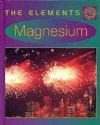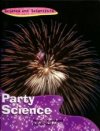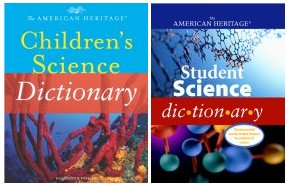Bang, Sparkle, Burst, and Boom Additional Information
Information about fireworks is available at www.pbs.org/wgbh/nova/fireworks/(PBS).
You can learn more about how fireworks work at people.howstuffworks.com/fireworks.htm (How Stuff Works) pubs.acs.org/cen/whatstuff/stuff/7927sci3.html (Chemical & Engineering News).
Additional information about John Conkling and his research can be found at www.pbs.org/wgbh/nova/fireworks/conkling.html(PBS).
A teachers guide for the Nova broadcast “Fireworks!” is available at www.pbs.org/wgbh/nova/teachers/programs/2903_firework.html (PBS).
Fireworks Safety Test www.fireworksafety.com/ National Council on Fireworks Safety
Books recommended by SearchIt!Science:
 |
Magnesium— Colin Uttley
Published by Benchmark Books/Marshall Cavendish, 2000.
In 1618, a farmer from Epsom, England, noticed that his cows healed faster when their bodies were splashed with water from his well. This water became known as Epsom salts and was used as a cure-all. What was the magic ingredient? Magnesium, which is an element that is used in jet engines, cars, fireworks, tracer bullets, and nuclear power plants. In this survey of magnesium, learn about magnesium in the body, the chemistry of magnesium, its special properties, where it is found, and what it is used for. |
 |
Party Science— Peter Pentland, Pennie Stoyles
Published by Chelsea House Publications, 2002
When you’re at a party, you probably aren’t thinking about science. Still, there’s science at work all around you! This book surveys some of the science-related aspects of parties in its double-page spreads. Learn about where the bubbles in soft drinks come from, what makes ice cream taste good, how candles work—all within the pages of this colorful book. Next time you’re at a party, you can impress people with your scientific knowledge of what’s really going on with those balloons, Pop Rocks, and fireworks. |
Power Words
chemical compound A substance made of atoms of two or more chemical elements that are combined in molecules. Water is a chemical compound that has two hydrogen atoms and one oxygen atom in each molecule.
salt 1. A white or clear mineral found naturally in all animal fluids, in seawater, and in underground deposits. It is used to season food and to keep food from spoiling. As a chemical compound, salt is called sodium chloride. When salt is found in the ground, it is often called halite. 2. A chemical compound that forms when an acid and a base are combined, or when a metal is mixed with an acid. Salts have an electric charge, conduct electricity, and dissolve in water.
Copyright © 2002, 2003 Houghton-Mifflin Company. All rights reserved. Used with permission.
